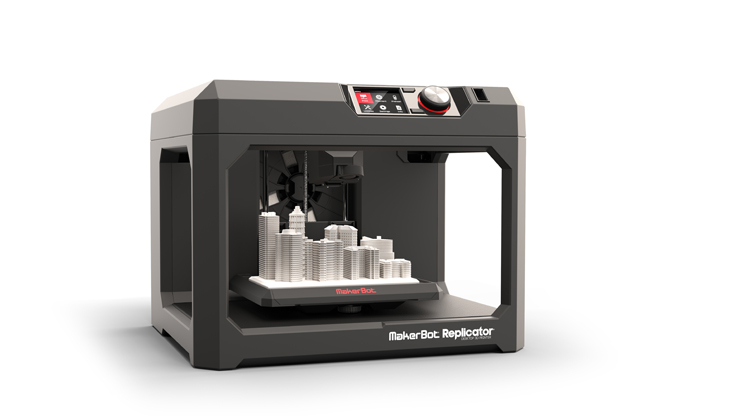The world of printing has gotten very exciting since the innovation of the 3D printer.
This incredible machine has the ability to essentially build tangible objects with lasers, layer by layer, right before your eyes. This technology is a strong departure from the long established standard of the printing industry: the InkJet printer.
In this article, learn more about what makes these two printing technologies so different.
The Grand InkJet Printer
The InkJet was a huge technological advancement in the history of printing. From the 1970s through the 1990s, dot-matrix printing was the industry standard. This printer used a square or rectangular grid made up of metal needles that pressed up against a ribbon of ink, creating the dotted shapes of letters or numbers. You may still notice these characteristic dotted characters on old movie theater tickets or invoices.
The InkJet printer was a significant upgrade to the dot-matrix printer. Instead of using metal needles, InkJets use hundreds of what are essentially little nibs, which are far more accurate and dependable than the metal needles. Though many variations of InkJet printers fire ink in different ways, InkJets are renowned for the crispness and fullness of their final printing quality, making them the preferred option for photo printing.
The New Frontier: 3D Printers
Though it seems hardly but an idea made for sci-fi television shows, 3D printing has become a reality. This type of printing differs significantly from InkJets and all other former printing machines. The biggest difference is that 3D printing is a creation of custom 3-dimensional objects with the help of lasers and CAD (Computer-Aided Design) software. No longer concerned with putting text and images on a flat sheet of paper, 3D printing builds objects from the ground up.
Early 3D printers used the sculpting method, where lasers shave away layers from a block of material, gradually shaping the desired object. This was an elementary method, which was insufficient for objects that had a hollowed area inside. Stereolithography is the newest innovation to 3D printing, which lays precise layers of a liquid that are made up of photopolymer resins and hardens once the lasers pass over. The result of this new method is that extremely complicated shapes can be effortlessly created on the spot. The most popular application for stereolithography printing are industrial companies looking to create unique pieces of piping or tools.
Choosing the Best Printer for you
Although 3D printers are still in the early stages of hitting the consumer home market,
you can already own one and print useful household items, including:
- Utensils
- Furniture shims
- Camera mounts
- Kitchen appliances
- Wine racks
- Combination safes
- Outlet protectors
- Pen holders
The printing industry is more than just creating printers useful for work and school.
The printing industry is working to change the world and how we interact
with day-to-day objects.
Innovative 3D Printing
3D printers are a versatile tool that many are using to change the world. From providing custom fit prosthetics to building affordable, low income housing, 3D printing can help people improve their lives.
These printers are also useful when they are aimed at saving the environment. Protecting endangered species and fragile ecosystems is possible with the use of a 3D printer.
Although 3D printers are on the rise and will make an industry-shattering impact as they become a mainstay, InkJet is still the primary source of printing for many homes and offices across the world. With remanufactured ink cartridge suppliers, ethical paper sourcing, and the constant need for print, InkJet is a very viable printing method that does not seem likely to be replaced by the advent of the 3D printer. However, it is exciting to consider that 3D printers will cohabitate the technology world alongside the InkJet, creating for more possibilities that have yet to be pioneered.
Author Bio:
Albert Krav is a software developer and IT expert, working with his colleagues at 1ink to create the best solutions for all InkJet and LaserJet printing issues. With his vast knowledge about technology and computer programming, he has helped countless homes and offices achieve fluid printing options. When he is not busy with work, he enjoys listening to jazz and drinking coffee.

